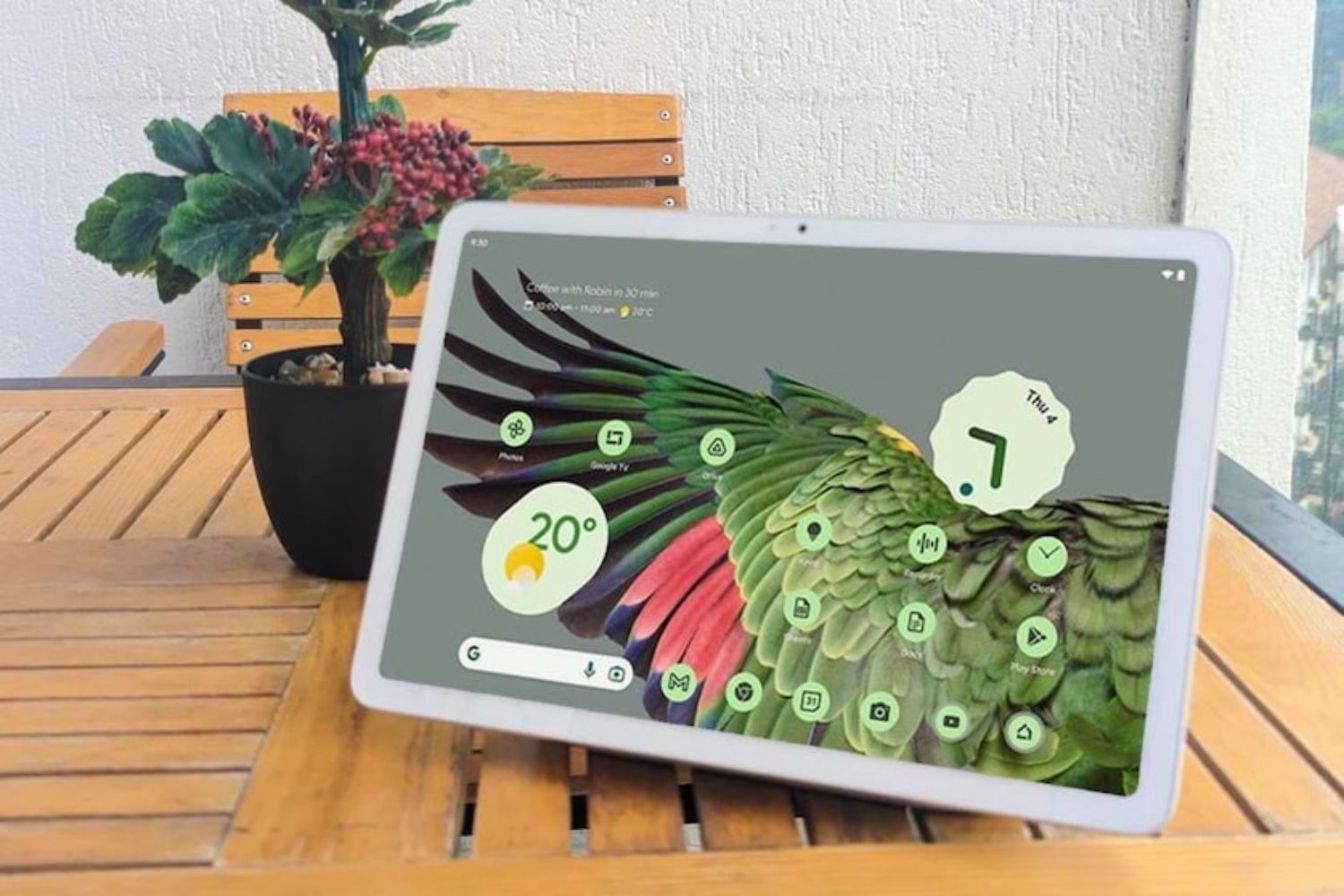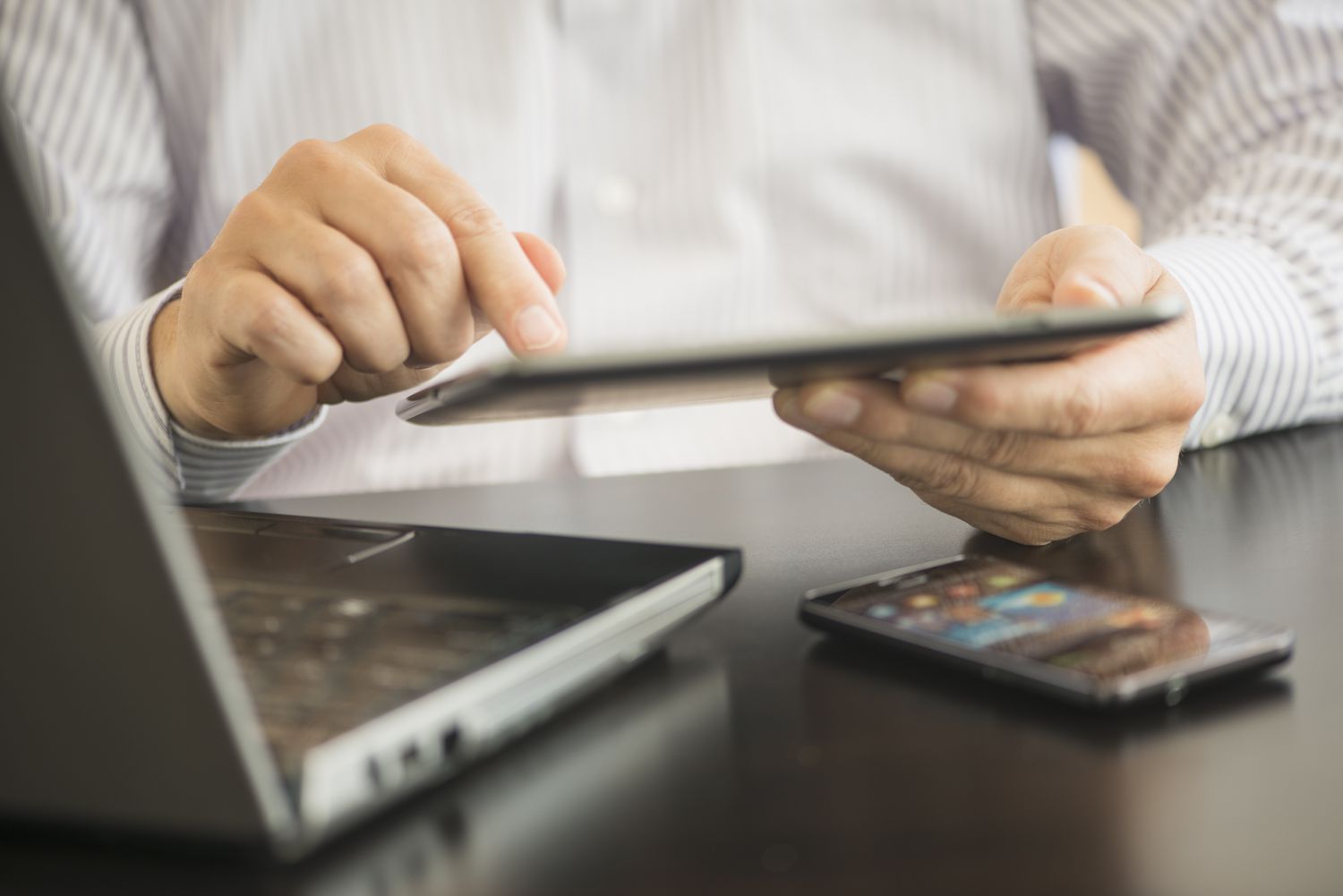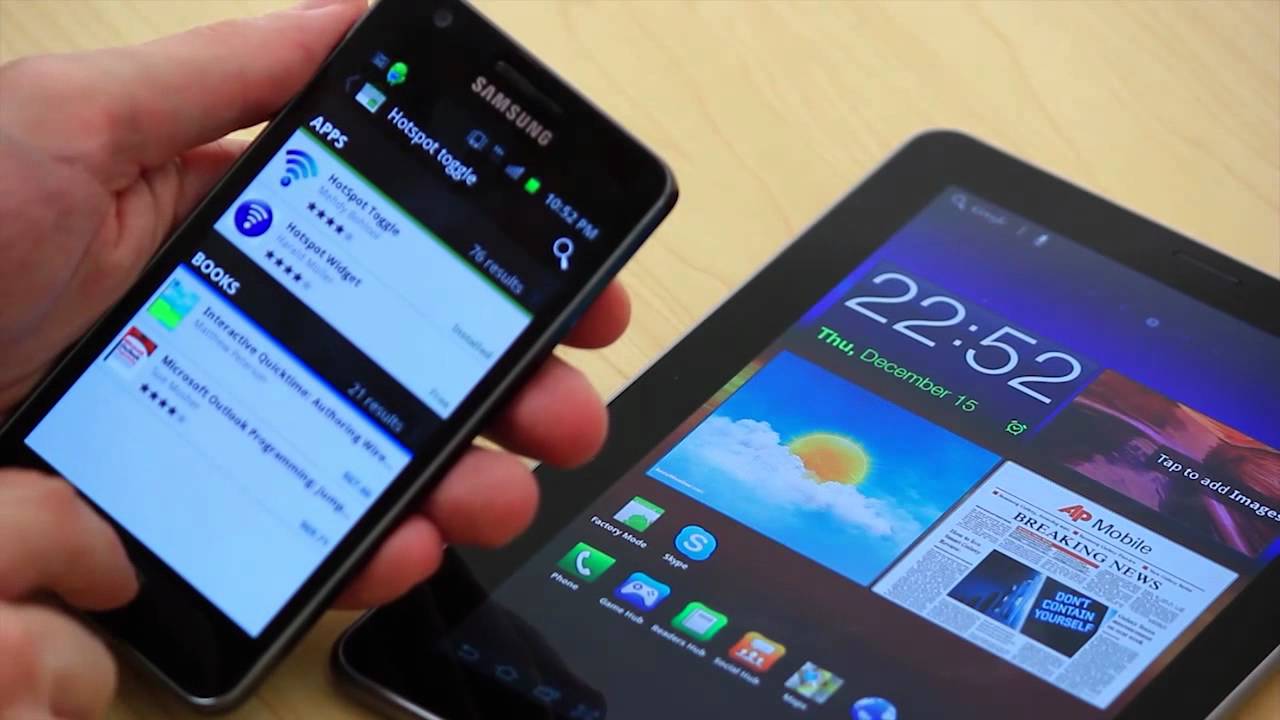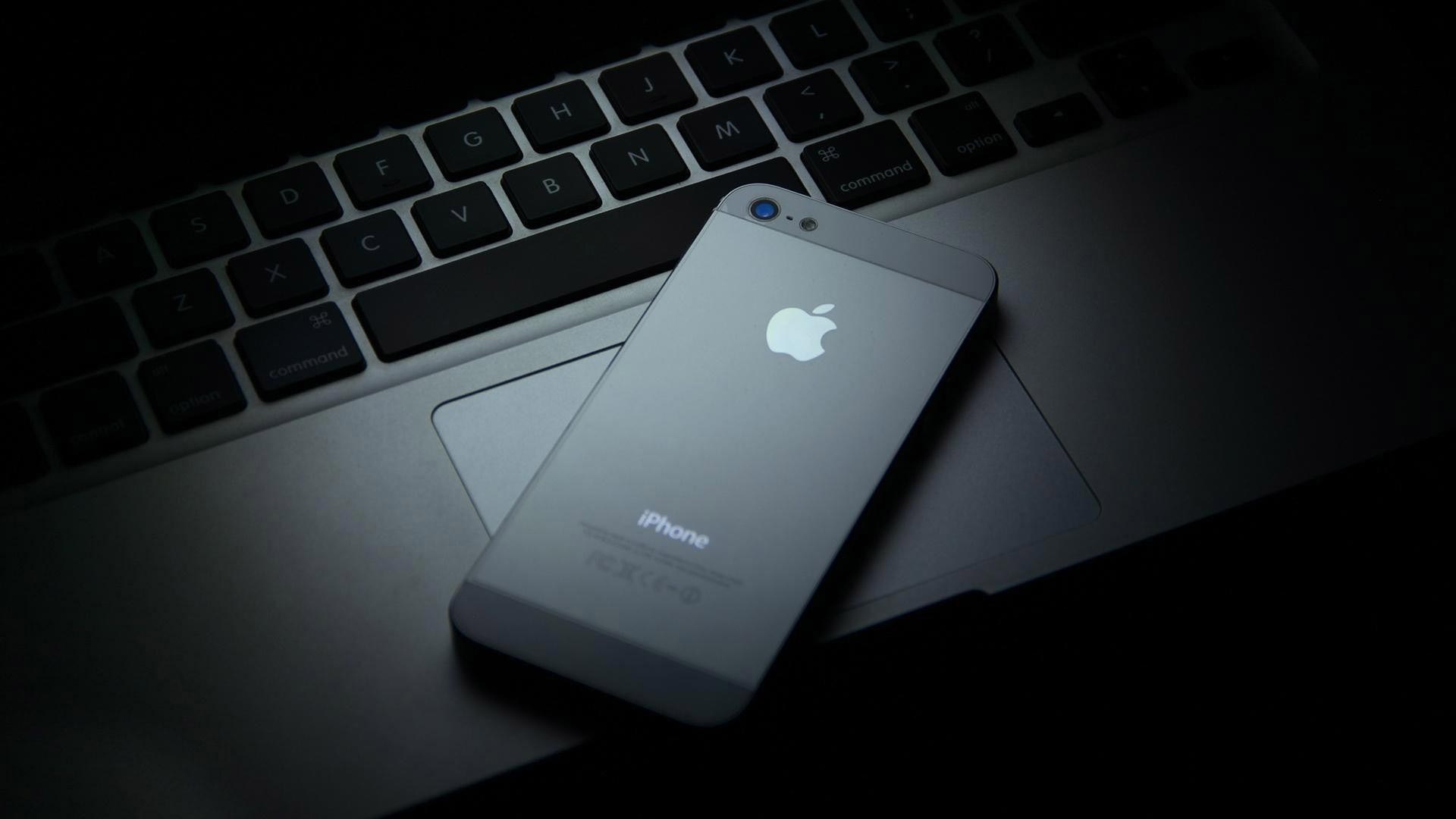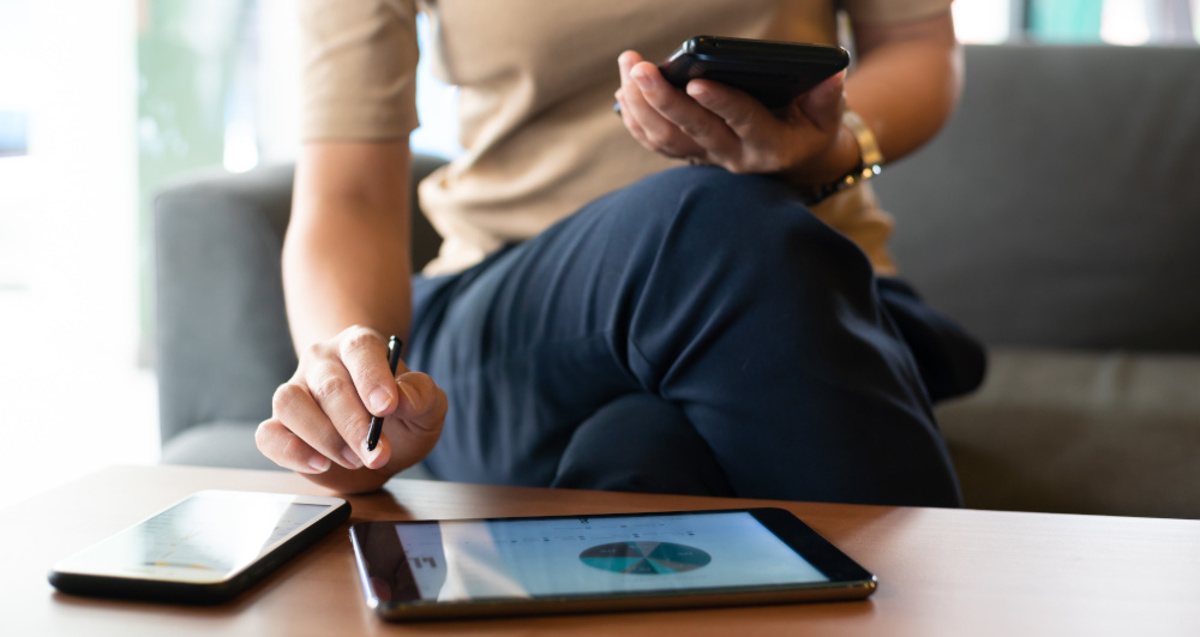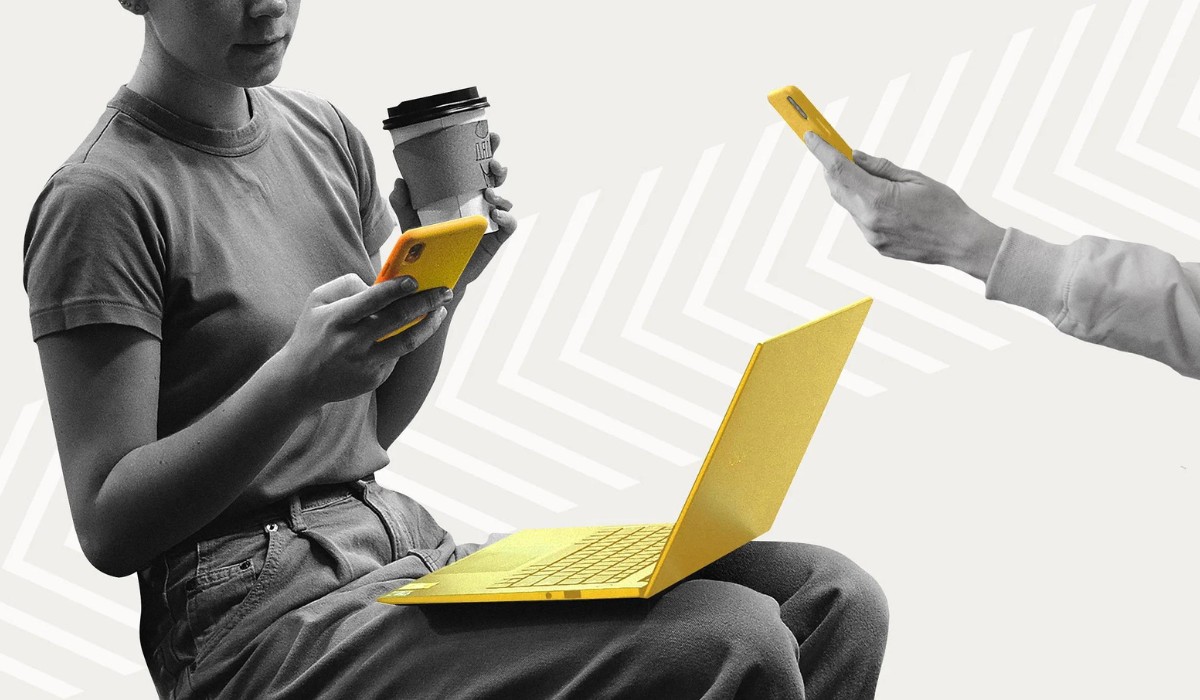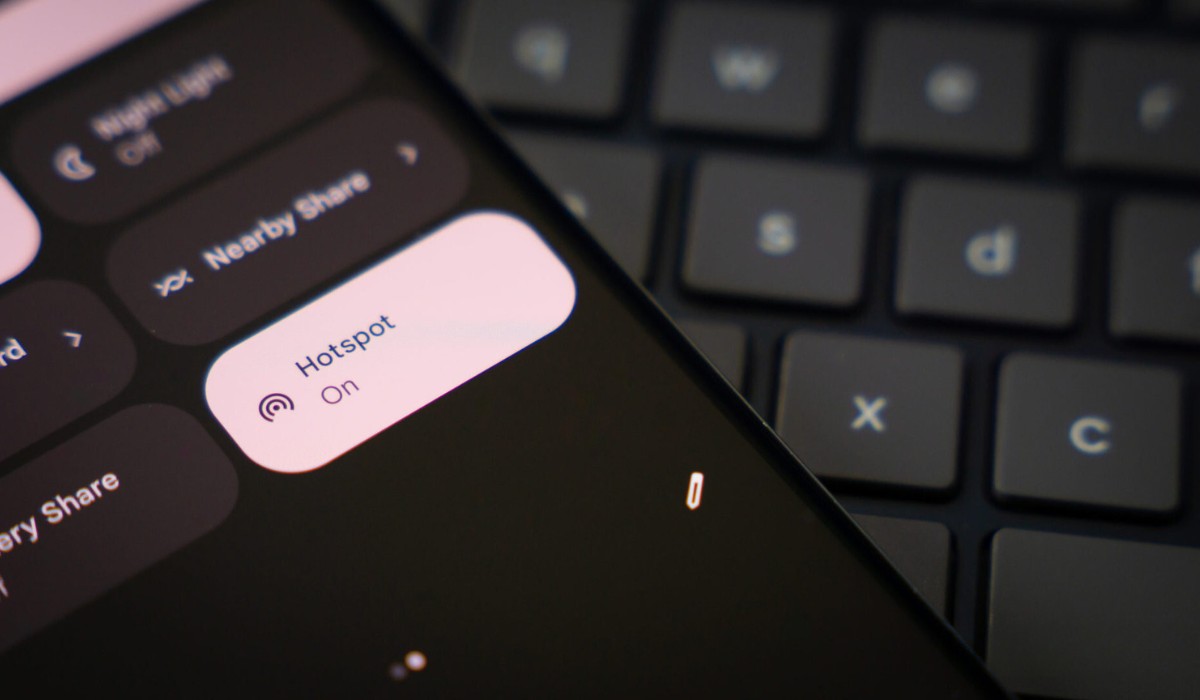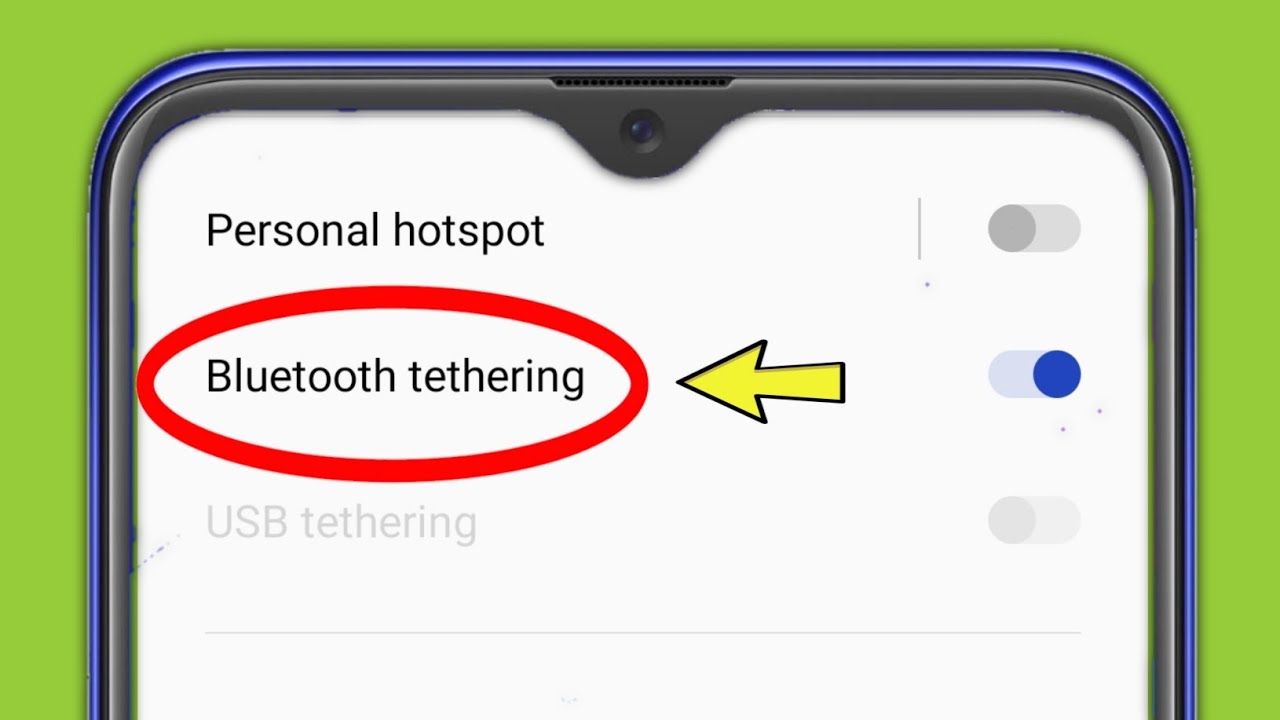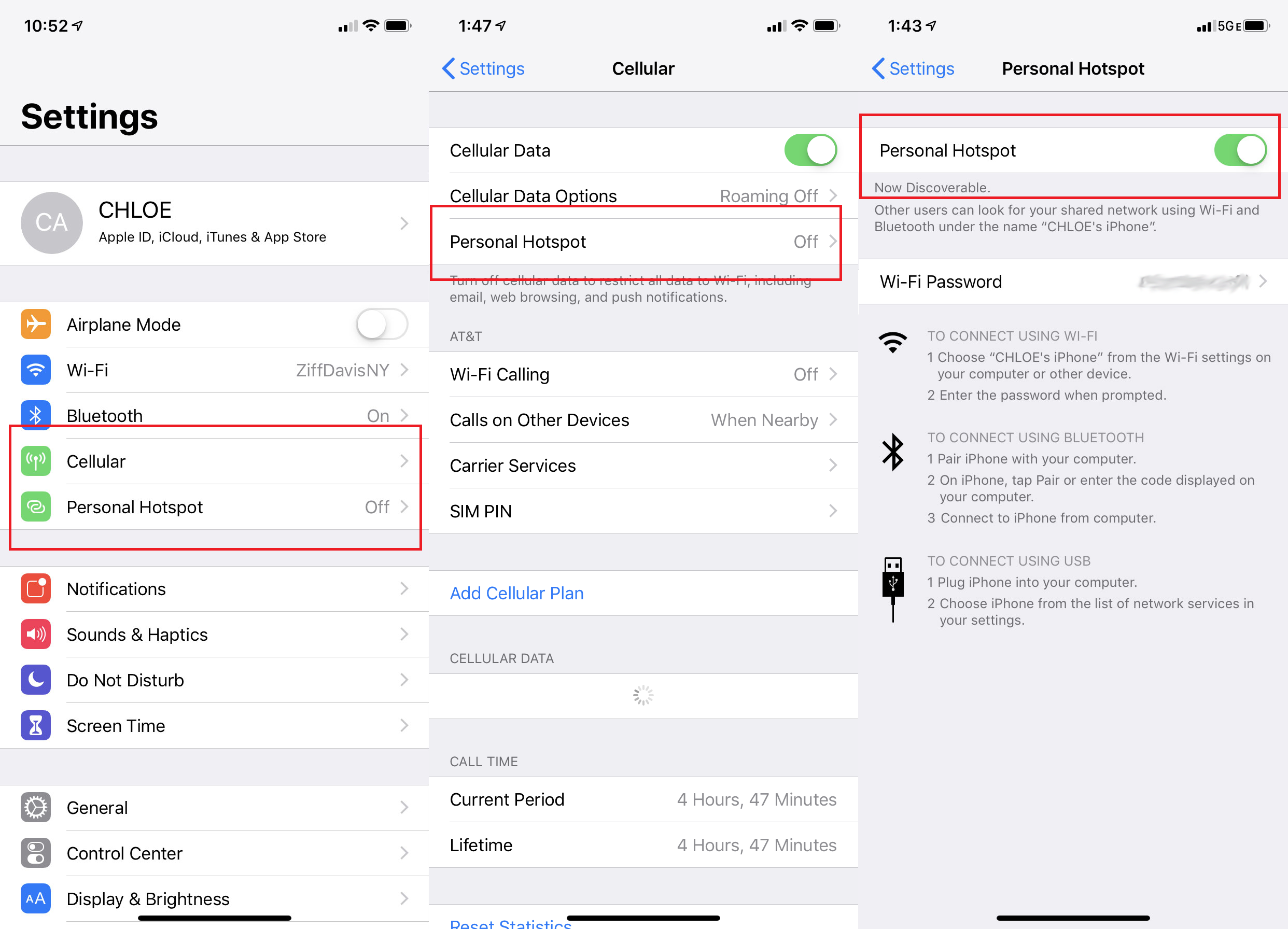Introduction
Welcome to the digital age, where connectivity and mobility are key. With the rapid advancement of technology, we are constantly finding new ways to stay connected no matter where we are. One such innovation is the ability to tether a tablet to an Android phone. This allows you to share your phone’s internet connection with your tablet, giving you access to the internet on a larger screen and providing greater flexibility in terms of productivity and entertainment.
Tethering, in simple terms, refers to the process of using your phone as a mobile hotspot to connect other devices, such as tablets, laptops, or other smartphones, to the internet. By leveraging your Android phone’s data connection, you can create a personal Wi-Fi network that your tablet can connect to, effectively allowing you to surf the web, stream videos, and use various apps on your tablet without needing a separate internet connection.
The benefits of tethering your tablet to an Android phone are numerous. Firstly, it eliminates the need for a separate data plan for your tablet, saving you money on additional monthly charges. Secondly, it provides you with the convenience of using a larger screen for activities such as browsing the internet, watching videos, or working on documents. Lastly, tethering gives you the flexibility to access the internet on your tablet even when you are outside of Wi-Fi range, ensuring that you are always connected and productive.
Before we delve into the steps of tethering a tablet to an Android phone, it’s important to check the compatibility of your devices. Make sure that both your tablet and Android phone support tethering functionality. Generally, most Android phones and tablets released in the past few years should have this feature, but it’s always a good idea to double-check.
Now that we have a basic understanding of tethering and its benefits, let’s proceed to the step-by-step guide on how to tether your tablet to an Android phone and enjoy the benefits of a larger screen and seamless internet connectivity.
What is tethering?
Tethering is a feature that allows you to share your Android phone’s internet connection with other devices, such as tablets, laptops, or other smartphones. It essentially turns your phone into a mobile hotspot, creating a Wi-Fi network that other devices can connect to and access the internet through.
When you tether your tablet to your Android phone, you are using your phone’s cellular data connection to provide internet access to your tablet. This means that you can browse the web, check emails, stream videos, and use various apps on your tablet, even if you are in a location where there is no Wi-Fi network available.
There are different ways to tether your tablet to your Android phone. The most common method is to use the mobile hotspot feature, which is built into most Android phones. This allows you to turn your phone into a Wi-Fi hotspot, creating a secure network that your tablet can connect to.
Another method is to use a USB cable to physically connect your phone to your tablet. This method is useful if you want a more stable and faster connection, but it requires a USB cable and may not be as convenient as using a wireless connection.
It’s important to note that tethering uses your phone’s cellular data, so you need to have a data plan that supports tethering. Some carriers may charge an additional fee for tethering, while others include it as part of their data plans. Make sure to check with your carrier to determine if there are any additional charges or limitations when it comes to tethering.
Tethering can be a useful feature in a variety of situations. For example, if you are traveling and want to use your tablet to work or stay connected, but there is no Wi-Fi network available, tethering allows you to use your phone’s data connection as a backup. It can also be helpful if you have a limited data plan on your tablet and want to save bandwidth by using your phone’s data instead.
Now that we have a clear understanding of what tethering is and how it works, let’s move on to the next section, where we will explore the benefits of tethering a tablet to an Android phone.
Benefits of tethering a tablet to an Android phone
Tethering your tablet to an Android phone offers a range of benefits that enhance your productivity, convenience, and connectivity. Here are some key advantages:
- Cost-saving: Tethering eliminates the need to purchase a separate data plan for your tablet. By leveraging your Android phone’s existing data plan, you can save money on additional monthly charges.
- Larger screen: Working, browsing, or watching videos on a tablet’s larger screen can significantly enhance your experience compared to using a smaller phone screen. Tethering allows you to leverage the tablet’s display for increased comfort and productivity.
- Flexibility: With tethering, your tablet can access the internet on the go, even in places where Wi-Fi networks may be unavailable. Whether you’re traveling, commuting, or simply working from a location without Wi-Fi, tethering provides you with uninterrupted connectivity.
- Multi-device convenience: Tethering allows you to connect multiple devices to your Android phone’s internet connection. This means you can simultaneously browse the web, stream content, and use various apps on your tablet, laptop, or other devices, all while using a single data plan.
- Increased productivity: By tethering your tablet to an Android phone, you can work on documents, access cloud-based apps, and collaborate with colleagues using the larger screen and enhanced capabilities of the tablet. This can boost your productivity and efficiency, especially when engaging in tasks that require a bigger workspace.
- Backup internet connection: Tethering can serve as a backup internet connection option. In situations where your home or office Wi-Fi network is down, you can rely on your Android phone’s cellular data and tethering functionality to stay connected and continue your online activities.
- Data management: Tethering allows you to manage your data usage more effectively. Since you’re using a single data plan for both your phone and tablet, you can monitor and control your data consumption to avoid exceeding your monthly limits. Some Android phones also offer features to track data usage and set data usage limits, giving you better control over your internet usage.
With these benefits in mind, tethering your tablet to an Android phone becomes an attractive option to enhance your mobile experience, provide flexibility, and optimize your productivity. Now that we understand the advantages of tethering, let’s move on to the next section, where we will check the compatibility of your devices to ensure a seamless tethering experience.
Checking compatibility
Before you begin the process of tethering your tablet to an Android phone, it’s important to ensure that both devices are compatible with each other and have the necessary features and settings to support tethering functionality.
Firstly, check if your Android phone supports tethering. Most Android phones released in recent years come with built-in tethering capabilities. However, it’s always a good idea to verify this feature on your specific phone model. You can do this by referring to the phone’s user manual or by searching online for the specifications of your phone.
Next, ensure that your tablet is compatible with tethering. While most tablets, especially those running on the Android operating system, can be tethered to an Android phone, it’s still important to confirm this capability. Check the tablet’s user manual or look for information on the manufacturer’s website to determine if your tablet supports tethering.
Another consideration is the operating system version of both your phone and tablet. Make sure that both devices have a compatible Android version to ensure a smooth tethering experience. While older devices may have limitations, most modern Android phones and tablets should support tethering functionality across different Android versions.
Additionally, check if your phone and tablet have the necessary settings to enable tethering. On your Android phone, you should have the option to create a mobile hotspot or enable tethering in the network settings. This option is usually found under the “Settings” menu, followed by “Network & Internet” or similar labels. On your tablet, you will need to access the Wi-Fi settings and look for the option to connect to a mobile hotspot or tethered network.
Lastly, it’s crucial to consider your data plan’s compatibility with tethering. Some cellular providers may require you to have a specific data plan that includes tethering, while others may charge an additional fee for using tethering services. Review your carrier’s terms and conditions or contact their customer support to confirm your eligibility for tethering.
By verifying the compatibility of your Android phone and tablet, as well as the settings and data plan requirements, you can ensure a seamless tethering experience. Now that we have confirmed the compatibility, let’s move on to the next section, where we will explore the step-by-step process of tethering your tablet to an Android phone.
Step 1: Enable mobile hotspot on your Android phone
The first step in tethering your tablet to an Android phone is to enable the mobile hotspot feature on your phone. The mobile hotspot feature allows you to create a Wi-Fi network that your tablet can connect to, using your phone’s cellular data connection.
To enable the mobile hotspot, follow these steps:
- Open the “Settings” menu on your Android phone. You can usually find the Settings icon in the app drawer or the quick settings panel.
- Scroll down and tap on “Network & Internet” or a similar option, depending on your phone’s settings menu.
- Look for the “Hotspot & tethering” option and tap on it.
- Select “Mobile hotspot” or a similar option. You may also see “Wi-Fi hotspot” or “Tethering & portable hotspot” depending on your phone’s manufacturer and Android version.
- Toggle the switch to enable the mobile hotspot. You may need to customize the hotspot settings, such as the network name (SSID) and password. Choose a secure and memorable password to protect your hotspot.
- Once you have enabled the mobile hotspot, you will see the network name and password displayed on the screen. Note down this information as you will need it to connect your tablet to the hotspot.
Keep in mind that enabling the mobile hotspot on your Android phone may consume battery, especially if multiple devices are connected and actively using the internet. To conserve battery life, consider connecting your phone to a charger while using the mobile hotspot.
Now that the mobile hotspot is enabled on your Android phone, we can proceed to the next step of connecting your tablet to the mobile hotspot. In the next section, we will guide you through the process of connecting your tablet to the mobile hotspot created by your Android phone.
Step 2: Connect your tablet to the mobile hotspot
After enabling the mobile hotspot on your Android phone, the next step is to connect your tablet to the hotspot network. This will allow your tablet to utilize your phone’s internet connection and access the web, use apps, and stream content. Follow these steps to connect your tablet to the mobile hotspot:
- On your tablet, go to the Settings menu. The location of the Settings menu may vary depending on the tablet’s manufacturer and operating system, but it is typically represented by a gear icon.
- In the Settings menu, find and select the Wi-Fi option.
- Look for available Wi-Fi networks and locate the network name (SSID) of your Android phone’s mobile hotspot. It should be the same network name that you noted down in the previous step.
- Tap on the network name to connect to the mobile hotspot. If prompted, enter the password for the mobile hotspot that you set up during the enabling process on your Android phone.
- Wait for your tablet to connect to the mobile hotspot. Once connected, you should see the Wi-Fi icon in the status bar of your tablet, indicating a successful connection.
It’s worth mentioning that some tablets may have additional options or settings to manage Wi-Fi connections. For example, you might be able to set the mobile hotspot network as a preferred network, enable auto-connect, or customize network settings specific to the tablet. Explore the Wi-Fi settings on your tablet to take advantage of these features if available.
By connecting your tablet to the mobile hotspot created by your Android phone, you can now enjoy the benefits of a larger screen and extend your internet access beyond the confines of your phone. In the next step, we will discuss how to adjust settings for optimal performance when tethering your tablet to an Android phone.
Step 3: Adjusting settings for optimal performance
Once you have successfully connected your tablet to the mobile hotspot on your Android phone, it’s important to adjust a few settings to ensure optimal performance and a seamless tethering experience. Here are some settings you can consider adjusting:
- Wi-Fi settings: On your tablet, navigate to the Wi-Fi settings and locate the connected mobile hotspot. You may have additional options available, such as “Advanced” or “Additional settings.” Explore these options and customize settings that can enhance the Wi-Fi connection, such as changing the frequency band, enabling or disabling Wi-Fi power saving mode, or modifying the network behavior.
- Mobile hotspot settings: On your Android phone, revisit the mobile hotspot settings if necessary. You can access these settings by going to the “Settings” menu, selecting “Network & Internet,” and then tapping on “Hotspot & tethering.” Consider adjusting the maximum number of connected devices, modifying the hotspot timeout duration, or tweaking other hotspot-specific settings to optimize performance and security.
- Data usage: Monitor your data usage while tethering to avoid exceeding your data plan limits. Most Android phones provide the option to track data usage under the “Settings” menu, usually labeled as “Network & Internet” or similar. Set data usage limits, view detailed usage statistics, and manage background data usage to ensure efficient consumption of your data plan.
- Connectivity priorities: If you have both Wi-Fi and cellular data enabled on your tablet, you may encounter situations where the tablet automatically switches between the mobile hotspot and other available Wi-Fi networks. To ensure a stable and consistent tethering experience, consider disabling the option on your tablet to automatically connect or switch to other networks when the mobile hotspot is available.
- Security settings: Keep your tethered connection secure by enabling password protection on your mobile hotspot. This will prevent unauthorized access to your network and ensure that only devices with the correct password can connect to your hotspot. Regularly update the password for added security.
By adjusting these settings, you can optimize your tethering experience and ensure a stable and reliable connection between your Android phone and tablet. It is also advisable to periodically check these settings and make any necessary adjustments based on your specific preferences and requirements.
In the next step, we will discuss how to manage data usage effectively when tethering your tablet to an Android phone. Understanding how to monitor and control your data consumption is crucial to avoid unexpected charges and maximize the usage of your data plan.
Step 4: Managing data usage
When tethering your tablet to an Android phone, it’s important to manage your data usage effectively to avoid exceeding your data plan limits and incurring additional charges. Here are some tips to help you manage data usage efficiently:
- Monitor data usage: Keep track of your data consumption to stay aware of how much data you are using. Most Android phones provide built-in tools to monitor data usage. Navigate to the “Settings” menu, look for “Network & Internet” or similar options, and locate the data usage section. Set the data usage cycle based on your billing cycle, and regularly check the data usage statistics to ensure you stay within your plan limits.
- Limit background data: Many apps and services on your tablet may use data in the background, even when you are not actively using them. To conserve data, navigate to the “Data usage” or “Network & Internet” settings on your Android phone and explore the options to restrict background data usage. You can choose to disable background app refresh or set specific apps to use data only when you’re connected to a Wi-Fi network.
- Optimize streaming and downloads: Streaming videos, music, or downloading large files can consume a significant amount of data. Consider adjusting the quality settings of streaming services to reduce data usage. You can typically find these settings within the app itself. Additionally, when downloading files or updating apps, try to do so when connected to a Wi-Fi network to avoid using your cellular data.
- Use data-saving modes: Some Android phones offer data-saving modes or options that can help reduce data consumption when tethering. These modes restrict background data, compress images and web pages, and prioritize data usage for essential apps. Explore your phone’s settings or check with the manufacturer’s website to find out if your phone has a data-saving mode and how to enable it.
- Check for data-hungry apps: Certain apps may use a significant amount of data, even in the background. Review the data usage of individual apps on your Android phone and identify any apps that consume excessive data. If needed, consider limiting or uninstalling these apps to conserve data.
- Explore data monitoring apps: There are various third-party apps available that can help you monitor and manage your data usage more effectively. These apps provide detailed insights, real-time monitoring, and additional features to control data consumption. Search for data monitoring apps in the Google Play Store and choose one that suits your needs and preferences.
By implementing these data management techniques, you can effectively control and optimize your data usage when tethering your tablet to an Android phone. Being mindful of your data consumption ensures that you make the most of your data plan while avoiding unexpected charges.
Now that you have learned how to manage your data usage while tethering, we have covered the essential steps to successfully tether your tablet to an Android phone. In the next section, we will address some common troubleshooting issues that you might encounter and provide solutions to overcome them.
Troubleshooting common issues
While tethering your tablet to an Android phone is generally a straightforward process, you may encounter some common issues along the way. Here are a few troubleshooting tips for solving these issues:
- Connection issues: If you are having trouble connecting your tablet to the mobile hotspot, ensure that the Wi-Fi feature is enabled on your tablet and double-check that you entered the correct password for the hotspot. Additionally, try restarting both your phone and tablet to refresh their network settings and attempt the connection again.
- Slow internet speed: If you notice slow internet speed while tethering, there could be several factors at play. First, check the signal strength on your phone and make sure you are in an area with good cellular reception. If the signal is weak, consider moving closer to a window or a location with better coverage. Additionally, keep in mind that the number of devices connected to the mobile hotspot can impact the speed. If possible, limit the number of connected devices or prioritize essential tasks on your tablet to enhance internet speed.
- Disconnections: If you experience frequent disconnections from the mobile hotspot, try resetting the network settings on your phone. This can be done by going to the “Settings” menu, selecting “System,” and looking for “Reset” or “Reset options.” Choose the option to reset network settings and follow the on-screen prompts. After resetting, re-enable the mobile hotspot and attempt to connect your tablet again.
- Data usage concerns: If you are worried about exceeding your data plan limits, consider enabling data usage alerts or notifications on your Android phone. This feature notifies you when you reach a certain data threshold, allowing you to monitor and control your usage more effectively. You can typically find this option in the “Settings” menu under “Network & Internet” or similar labels.
- Incompatibility issues: If you find that your tablet and Android phone are not compatible for tethering, consider using alternative methods to share internet connectivity. For example, you can connect your tablet to your phone via a USB cable and use USB tethering instead. If neither method works, you may need to explore other options such as purchasing a separate portable hotspot device or contacting your cellular provider for assistance.
If you have tried these troubleshooting steps and are still experiencing issues, it may be helpful to consult the user manuals or support documentation for your specific tablet and Android phone. Additionally, reaching out to the customer support of your respective device manufacturers or your cellular provider can provide further guidance and assistance for resolving any persisting issues.
With these troubleshooting techniques, you can overcome common hurdles and enjoy a smooth and reliable tethering experience between your tablet and Android phone.
Now that we have addressed potential troubleshooting issues, let’s conclude this guide on tethering a tablet to an Android phone. By following the steps outlined in this guide and addressing any issues that may arise, you can seamlessly connect your tablet to your Android phone’s mobile hotspot and enjoy the benefits of a larger screen and convenient internet access.
Conclusion
Tethering your tablet to an Android phone opens up a world of possibilities, providing you with a larger screen, increased productivity, and the convenience of internet access on the go. By following the steps outlined in this guide, you can easily enable the mobile hotspot on your Android phone, connect your tablet to the hotspot, adjust settings for optimal performance, and manage your data usage efficiently.
The benefits of tethering a tablet to an Android phone are numerous. Not only can you save money by eliminating the need for a separate data plan for your tablet, but you also gain the flexibility of accessing the internet even in areas without Wi-Fi coverage. The larger screen of the tablet enhances your browsing, streaming, and work experience, boosting your productivity and enjoyment.
Throughout the tethering process, it is crucial to ensure compatibility between your devices, check your data plan’s compatibility and any additional fees or limitations that may apply. By monitoring your data usage, adjusting settings accordingly, and troubleshooting common issues that may arise, you can maximize your tethering experience and avoid unnecessary setbacks.
Remember, tethering relies on your Android phone’s cellular data, so it is important to be mindful of your data usage and set usage limits. Regularly check your data consumption, optimize streaming and downloads, and employ data-saving modes and other techniques to conserve data and stay within your plan limits.
If you encounter any difficulties or have specific questions regarding your tablet or Android phone, consult their respective user manuals or reach out to customer support for further assistance. They will be able to provide you with device-specific guidance and help troubleshoot any persistent issues.
Now that you have learned how to tether your tablet to an Android phone, it’s time to unlock the full potential of your devices. Enjoy the benefits of a larger screen, seamless internet connectivity, and increased productivity as you utilize your tablet alongside your Android phone’s mobile hotspot.







